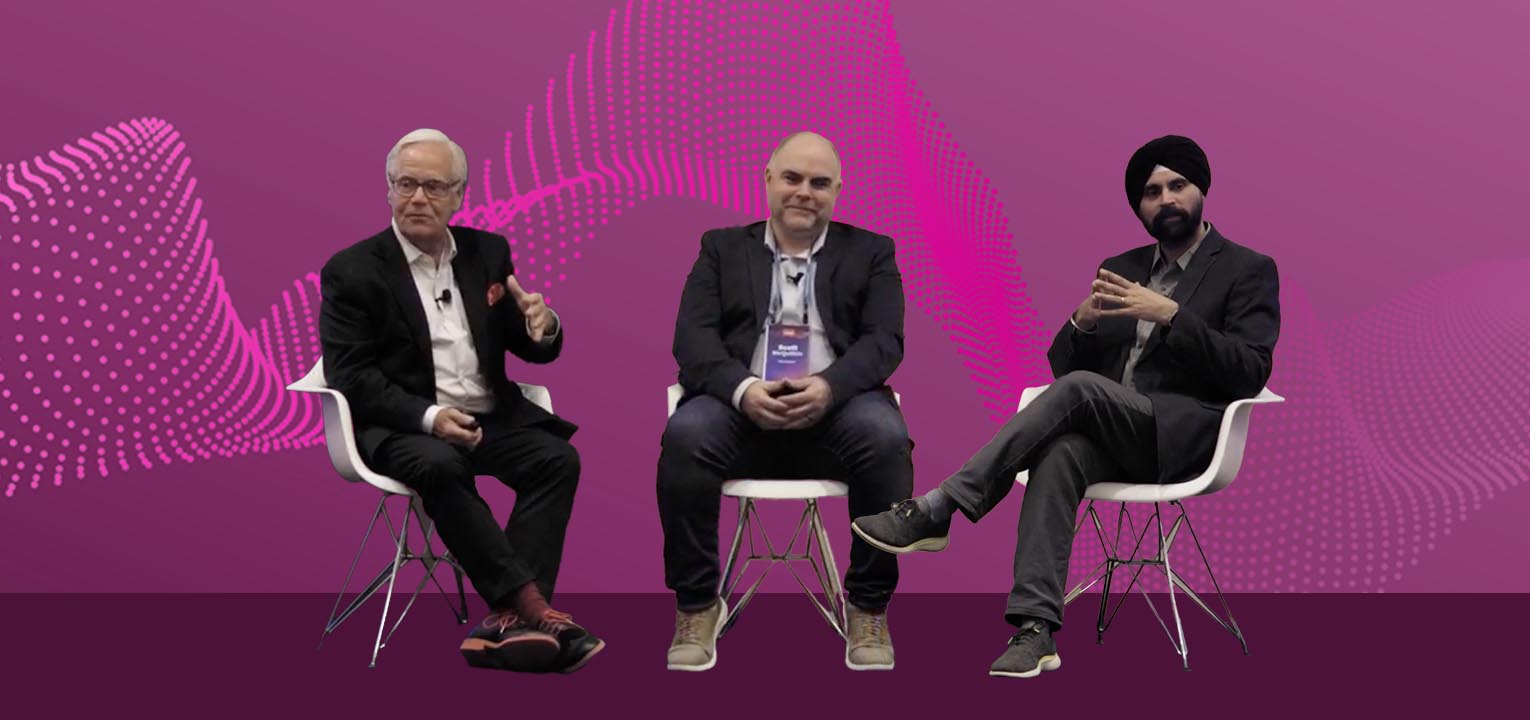March 8, 2019
Nationwide’s Recipe for Building Trust with Customers: AI and Empathy

Nationwide Building Society has always prided itself on having a tradition of innovation. In fact, they were the first high street institution to launch internet banking in the UK. As a 15-million strong member organization, their innovation has always been driven by the need to stay connected with their customers: Nationwide committed to making their digital engagements just as personal to each member as their face-to-face interactions.
Jag Bassi, Nationwide’s Head of Digital Propositions, was on stage at Finovate Europe in London last month to share how AI is helping Nationwide deliver on its promise of “Being there for our members.”
“What do we want to do as a Building Society, as an organization that is committed to improving the lives of its members? We really want to respond with empathy. And we are going to be looking at how we take AI and be able to identify the core life events in a user’s life. These life events affect all of us whether it is the loss of somebody in the household that brings in an income or it might be the loss of a job or it might be an illness or a depression. It happens to most people at some point in their lives.”
Meeting the challenge with Self-Driving Finance™
Recognizing that the industry’s attempt to launch PFM 1.0 has failed to meet customer needs and expectations for personalized money management, Nationwide turned its attention toward artificial intelligence to provide a simplified but far more effective customer experience.
“There was an overload of data. It was hard to discern what they should do. It was hard to interpret what the next best action is… We wanted to be more proactive. We wanted to be clear and actionable, relevant, far more achievable in terms of what we wanted users to do.”
MoneyWatch: Making money matters simple with AI-powered insights
The AI-powered MoneyWatch is now an integrated part of Nationwide’s digital experience for members using internet banking or the mobile banking app. True to its name, it offers insights and advice based on current or predicted account activity in clear, bite-sized chunks.
The service enables customers to track their bank activities, identify potential issues and opportunities, and suggest ways to spend smarter, avoid fees, and save more. For example, MoneyWatch proactively raises alerts when it recognizes unusual activity such as higher than usual spending or unexpected expenses that may not be able to be met by current or predicted future balances.
The goal is to simplify money management for customers – who are busy living their everyday lives – by using artificial intelligence to do the heavy lifting of monitoring and analyzing their financial transactions.
According to Bassi:
“We’ve kept it as simple as possible to minimize cognitive load and we tried to help them plan for what was going to occur next, to predict what the week after would look like, or what the end of the month would like, to enable them to make better planning decisions with their finances.”
Good for customers, good for the bank
Results shared by Bassi show that customers recognize the genuine benefit provided to them by these personalized insights and advice, and they respond with deeper engagement and higher satisfaction:
“We’ve seen a really high set of ratings on average across all of the set of insights. The average rating was 4.6.”
These results are consistent with findings from other banks around the world shared by Personetics CEO David Sosna during his part of the presentation:
“If you do that in a way that is not an offer, in a way that is presenting value for customers, you get double-digit click-through rates… We’re seeing it in multiple countries for multiple banks.”
Want to explore how your bank can harness the power of AI to engage and serve customers? Request a demo now
Latest Posts

The AI Implementation Reality Check

Why Asia Pacific Pacific Banks Must Lean into Cognitive Banking: A Conversation with Dr. Dennis Khoo

Explore our Spring Release Highlights – From Integrated Marketing Offers, to Custom Trackers, and AI Innovation









